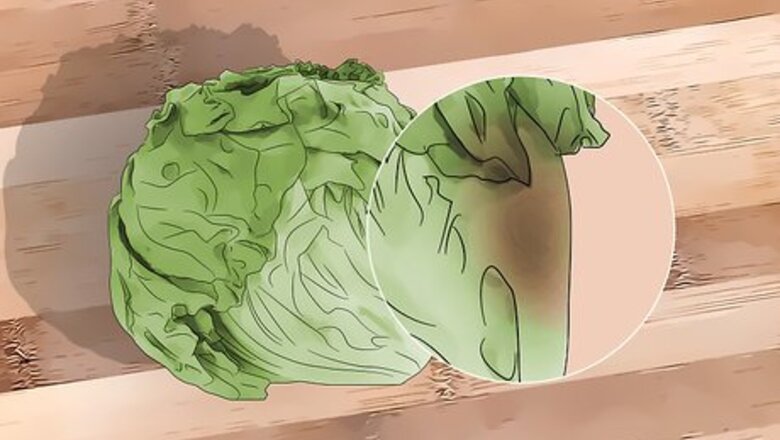
views
Identifying Decaying Lettuce
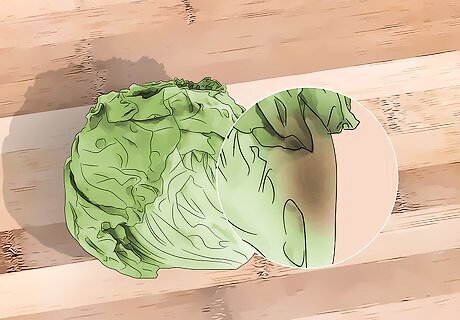
Look for brown or black leaves that indicate rotting. Discolorations are very recognizable when they appear. Normal lettuce is typically a light-green or yellow color, although varieties such as Red Coral have purple leaves. When the dark spots appear on multiple leaves in place of these colors, your lettuce is on its way out. Discolored lettuce often feels slimy and smells bad as well. Small brown spots usually aren’t harmful if you eat them. You can also cut around them if the rest of the lettuce leaf is still healthy.
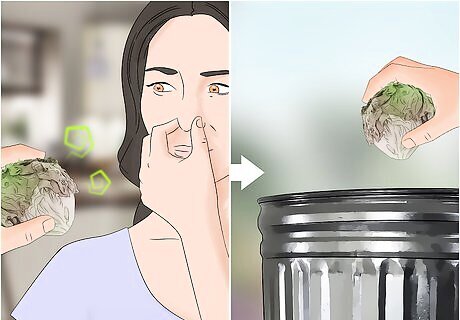
Throw out lettuce with a strong, rancid smell. Fresh lettuce has little to no smell. You may be able to detect an earthy scent from the soil the lettuce grew in. Lettuce that smells pungent is rotting. The rotten smell will be very unpleasant, so it is easy to detect. The smell will be so off-putting that you won’t want to eat the lettuce anyway, but it is often accompanied by discoloration and slime on the leaves.

Check the leaves for signs of wilting. Fresh lettuce is firm and crisp. As lettuce ages, it becomes soft, droopy, and wrinkled. You can spot these changes by eye or by touching the leaves. These leaves may not yet feel wet, but the lettuce is still near spoiling when it begins to wilt. Lettuce wilts right before it begins to turn brown. You will have to discard it or find a use for it right away. Wilted lettuce is safe to eat if it hasn’t begun rotting. You can try soaking it in ice water for up to 30 minutes, which may restore its crispness.
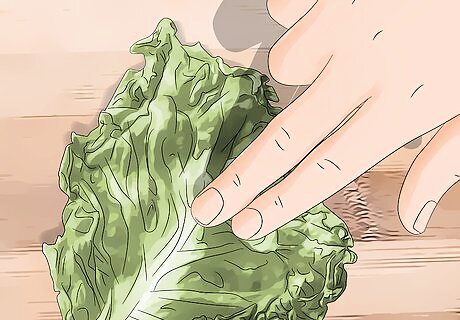
Touch the leaves to see if they feel wet. In case your leaves aren’t noticeably rotten, be aware of their texture. You may be able to see moisture on the leaves as well as feel it. A sticky or slippery substance forms on the leaves as they begin to degrade, indicating softness and rot. Although wet leaves may still be safe to eat, they won’t taste very good. The leaves become soft as they wilt.
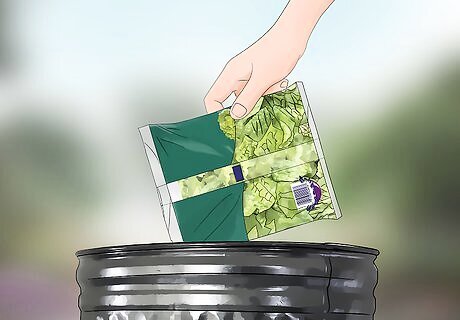
Throw away bags of lettuce that look swollen or moist. You won’t be able to smell or touch the lettuce until you open the bag, but you may still see some signs of spoilage. The bag will puff up as moisture escapes the leaves. You may see beads of water collecting on the inside of the bag. Moisture creates the perfect growing spot for bacteria and mold, so don’t eat the lettuce. You may be able to see brown spots in a spoiled bag of lettuce. You can also try opening the bag. The lettuce will have that nasty, rotten smell if it has gone bad.
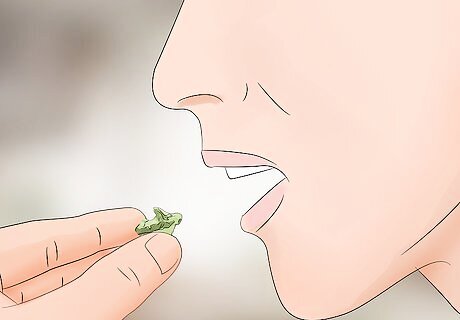
Taste the lettuce to see if it is sour. Find a piece of lettuce that looks safe to eat and nibble on it. You are most likely familiar with the inoffensive, watery taste of fresh lettuce. Spoiled lettuce will taste the same way rotten lettuce smells. It will have a very strong, rancid, sour taste that will make you want to spit it out. Avoid eating the lettuce if it is sour. Throw it away immediately.
Storing Lettuce Properly
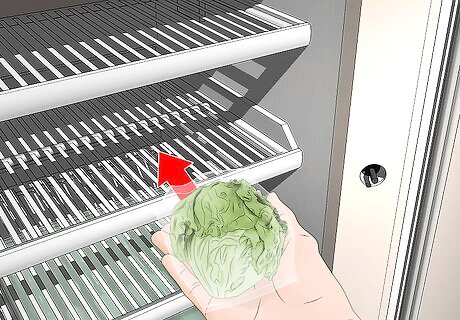
Store full heads of lettuce without cutting them. Full heads of lettuce tend to last longer than individual leaves. You don’t need to do anything special to store them. Leave them intact and place them in a cool, dry spot in your refrigerator. Heads of lettuce last around 10 days when stored this way. A vegetable crisper is a great place to store heads of lettuce, but not all refrigerators have this drawer. You can also wrap the lettuce in paper towels to absorb damaging moisture. Keep lettuce away from ethylene-producing fruit such as bananas and tomatoes.
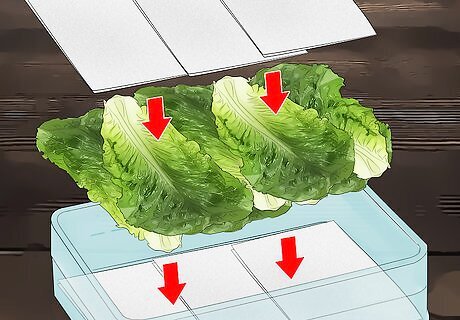
Place loose leaves in a paper-lined plastic storage container. Place 2 or 3 layers of paper towels in a resealable plastic container. If you don’t have a container, you can also use plastic sandwich bags. Set the leaves on top of the paper towels, then cover them with more paper towels. The paper towels absorb moisture, keeping the lettuce crisper for longer. Seal the storage container when you are done. This will help keep out harmful moisture and gas. However, unsealed lettuce will still survive well in a crisper. You may want to do this for pre-cut lettuce in a bag as well. Moisture can’t escape the closed bag, so the lettuce may rot faster than you would like.
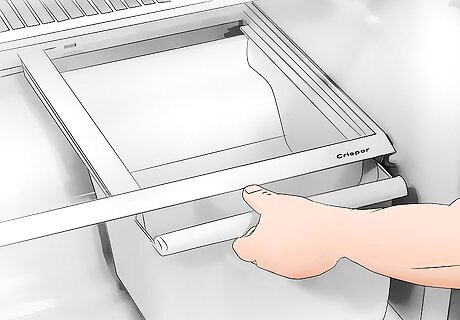
Store the lettuce in a cool, dry spot in your refrigerator. Keep the area well-ventilated so that moisture drains from the lettuce. A vegetable crisper drawer is the best spot. If this isn’t possible, stick the lettuce on the front end of a shelf away from ethylene-producing fruits like bananas and tomatoes. Lettuce leaves usually last up to 5 days but may last longer if stored properly. Be careful when storing lettuce in the back of the refrigerator. Not only does this make forgetting about the lettuce easier, but the cold from the freezer can damage the lettuce. You can also move the container of lettuce to the freezer. Since lettuce has a lot of water in it, it won’t stay crisp, but you can still use it for cooking.
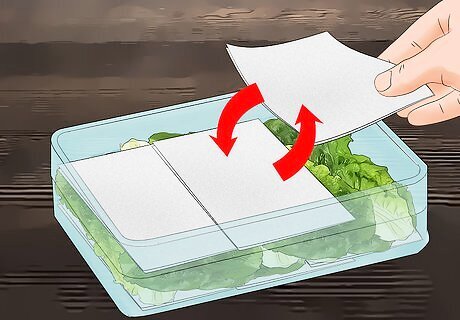
Replace the paper towels daily if you use them to store lettuce. The paper towels will get damp as they collect moisture from the lettuce. You can replace them when you notice them getting damp, but to be safe, replace them every day. You may be able to keep your lettuce fresher for longer this way. While changing out the paper towels, take the time to pick out any wilted or decaying leaves so they don’t spoil the rest of the batch.

Wash lettuce right before using it. Rinse lettuce off by filling your sink with cold water, then swishing the lettuce around in it by hand for a few minutes. This should remove any dirt still on the lettuce. Try to wash only as much lettuce as you need so that the rest of the lettuce doesn’t have excess moisture lingering on it. Moisture causes lettuce to soften and decay, so you want to avoid it as much as possible. You may rinse the lettuce off under running water, but lettuce is delicate and may bruise. Bruised or damaged leaves tend to decay faster.
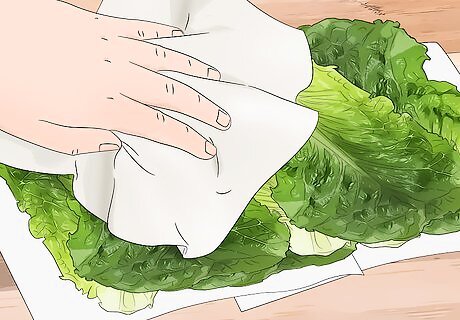
Dry the lettuce completely before storing it. If you have leftover lettuce leaves, they need to be free of moisture before being put into storage. The easiest way to do this is to put the leaves in a salad spinner. Spin them until they are completely dry. You can also pat the lettuce with a paper towel or roll it up in a towel to gently squeeze out the moisture.




















Comments
0 comment